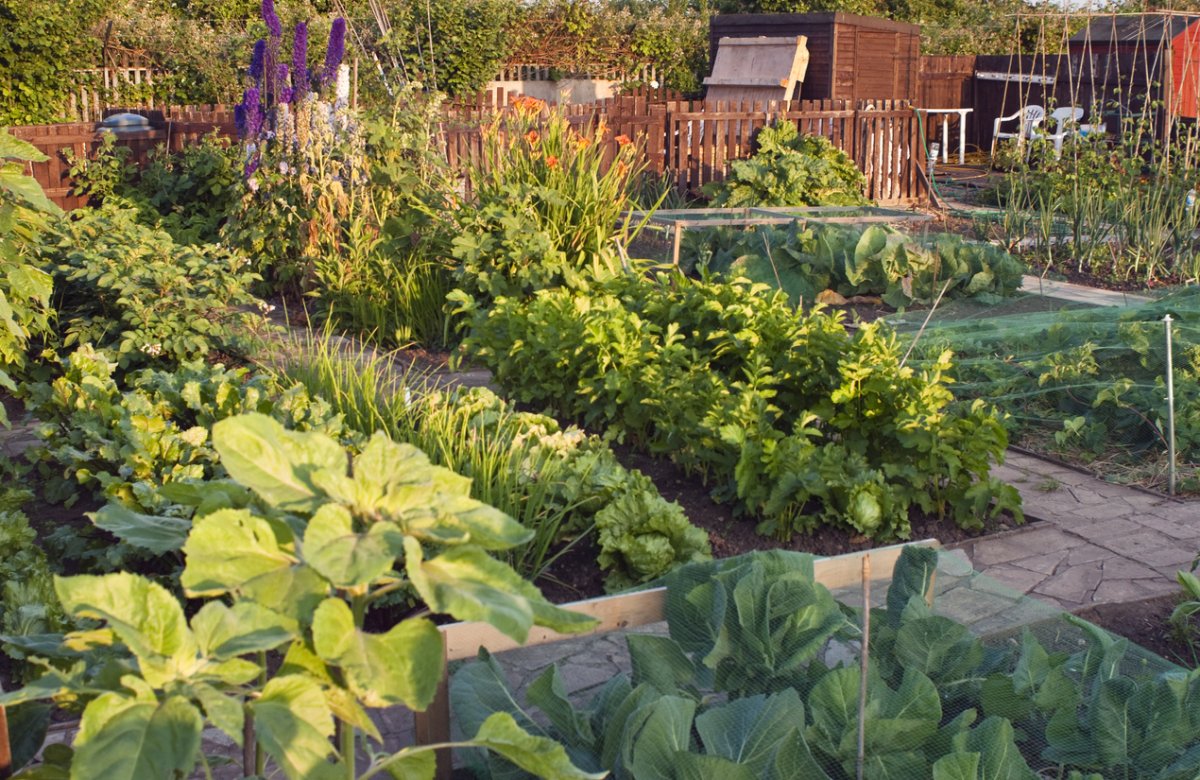Ah… the English vegetable garden. Maybe I’ve watched too many British television shows, but I picture an English vegetable garden as a place to take my afternoon tea with a book and biscuit whilst colorful Peacock butterflies flit about and the birds sing their happy songs.
Like many things in life though (IKEA furniture, for example), defining an English vegetable garden is not as simple as it seems. It’s anything but straightforward, and to make matters more confusing, you may find it is also called a kitchen garden, a cottage garden, a potager garden, or just a garden. Similarly, they may be small or grandiose, tidy or overflowing.
Despite all the names and styles, they do actually have a few defining characteristics. And even though they’re hard to define, they’re easy to plan.
Discover 10 top tips for growing, harvesting, and enjoying fruits, vegetables, herbs and more from your home garden—when you access the FREEBIE How to Grow a Vegetable Garden, right now!
Planting your English vegetable garden – even if you don’t live in England
To understand the English vegetable garden, we have to go back in time to at least the middle ages. Some historians theorize that these vegetable gardens, or cottage gardens, developed out of necessity, as peasants tried to maximize small plots to grow as much produce and herbs as possible. Over time, flowers were introduced to help with pollination, pest control, and so on. In other words, an English vegetable garden takes full advantage of companion planting.
Because of the need to make efficient use of limited resources, these cottage gardens were planted in groups rather than rows. And because they are ultimately utilitarian in nature, there is no vegetable, herb, or flower that was off limits. If you want to grow it and eat it, you can plant it in your garden.
Despite the utilitarian aspect of an English vegetable garden, there is more to it than just randomly throwing your favorite seeds at the ground. Look at any English garden and you will find an evident sense of beauty and serenity. Women Who Farm has a really nice way of describing these gardens: “The biggest teaching that the potager garden teaches us is that what we consume into our body is more than just through the mouth. We feed ourselves through our eyes, our noses, and our touch. These senses are just as necessary as taste. In the potager garden, we can grow for all senses.”
Okay, so how do you plan your English vegetable garden? First, understand that these gardens evolve over time, and they are a combination of beautiful and edible. The other common theme is that there is a focal point. That could be a birdbath, a bounty of orange and yellow marigolds, or a section of trellised pole beans.
What else? Keep it simple. Raised beds and borders are nice, but you don’t have to get too intricate. Sometimes simplicity is the path to beauty. Circles and diagonals look lovely if you have the space, but a simple curving edge is equally beautiful.
Contrasting colors are nice, too, which is easy to achieve if you mix flowers and vegetables. Edible flowers like the brightly-colored nasturtium have the added bonus of helping to prevent some pests. And not only do the purple flowers of the chive blossom look distinct, they also attract pollinators like bees, and they repel aphids, which makes them a nice companion plant for peas.
The great thing about an English vegetable garden is that it is truly open to interpretation. Fill the space with your favorite flowers, plants, and herbs and you’re well on your way to achieving your gardening goals.
Have you planted an English vegetable garden? I’d love to read your tips and advice in the comments below.
Discover 10 top tips for growing, harvesting, and enjoying fruits, vegetables, herbs and more from your home garden—when you access the FREEBIE How to Grow a Vegetable Garden, right now!

One reply on “How to Plan an English Vegetable Garden”
This is such a blessing, that I get this email because I have a community plot and the information is so informative thank you very much